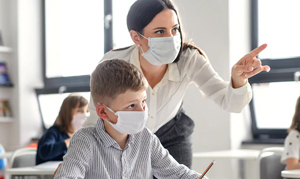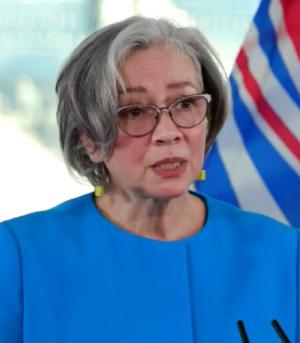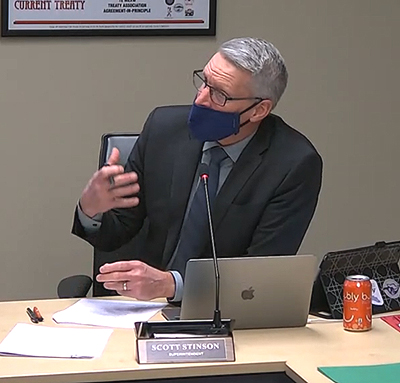
Monday January 10, 2022 | LANGFORD, BC [Updated 4 pm & 8 pm]
by Mary P Brooke, B.Sc. | Island Social Trends
Today, on this first day back after winter break — during the Omicron wave of the pandemic — 14% of students are away from class today in SD62 (west shore and Sooke) says SD62 Superintendent Scott Stinson.
He says more away in elementary schools than other levels.
Today Stinson said a student absence rate of “10% above normal” would be reported to Island Health. School closures for public health reasons are up to Island Health, Stinson told Island Social Trends today.
The Omicron variant is highly transmissible. The incubation period is short (three days) compared to earlier variants or the original SARS-CoV-2 (aka COVID) virus.
SD62 has schools in Langford, Colwood and Sooke. Students are also from families living in Highlands, East Sooke, parts of View Royal, and also west of Sooke out to Port Renfrew. There are about 11,200 students in SD62 this year.
No word yet on the number of teaching staff who are away from the classroom setting today. There are 750 teachers in the SD62 school district. “We were able to replace all absences today,” says Stinson.
He says that any ‘functional closures’ of schools (i.e. schools that have to close because there aren’t enough staff) will depend on which staff are away. For example, if they’re short on custodial staff at a given school, then that school cannot be cleaned.
Ministry guidelines:
Today the Ministry of Education outlined how absences from K-12 schools are assessed:
- Schools will be comparing current attendance rates to the previous years to determine if any potential activity signals related to attendance have been met. When reached, they will contact their local School Medical Health Officer to determine if further investigation is warranted.
- Current public health-identified potential activity signals are:
- If school attendance is 10% below historical normal (e.g., the previous years),
- If less than 75% of students in a grade are in attendance, OR
- For smaller schools (e.g., student population under 100) where large fluctuations in school absenteeism rates can be due to small numbers of students away, schools should contact public health if they determine an abnormal number of students are away due to illness over 2-3 days,
- Schools used last week to develop plans for different scenarios to see if and how programs could run when certain activity signals arose, including potential functional closures of a school or grade.

Minister’s statement:
Last Friday (January 7) just ahead of the return to K12 classes after winter break, Education Minister Jennifer Whiteside addressed in her media session (along with Provincial Health Officer Dr Bonnie Henry and Health Minister Adrian Dix), about absentee rates being a proxy for accurate COVID case numbers, given that Omicron is spreading too quickly for accurate numbers to be maintained.

She said that absenteeism above 10% of normal is a trigger, but that there is “no one cut off”. School populations vary in size and composition. School administrations “know their general level of absence… on a daily basis and what’s happening in their schools”, Whiteside said.
“I know this is an anxious time for parents and families,” she said, but “the education system is ready and able to adapt”.
Regarding how to determine Omicron/COVID levels, she said:
“What we understand in the current situation that we’re in with Omicron is that having access to information about individual test-positive cases is not going to be possible. So we need a proxy to understand what’s happening in schools. Schools know very well what their attendance rates are and how they fluctuate and what is typical for this time of year, so schools will be monitoring, on a daily basis, as they always do, for attendance as a trigger,” Minister Whiteside said.
“And when it reaches a certain point that will be a trigger to say that there’s something going on in a classroom or across a grade or in a school, and that requires an intervention by public health. When a school notifies public health that there is sort of what we might call a signal of concern with respect to attendance, a notification will also go out to the school community. The school community will know when a school has notified public health that there’s a matter for concern,” she said.
Public health component:
In K-12 schools, schools will closely monitor school attendance data to determine if they have meet a public-health determined potential activity signal, it was stated in a document COVID-19 Protocols for School & District Administrators and Staff: Management of School-Associated Activity (dated January 7, 2022) by the Ministry of Education as compiled along with the BC Centre for Disease Control. “When met, the school will notify public health and the school community,” the report states.
Public health, led by Medical Health Officers, will continue to lead investigations to determine if additional measures are needed.
School districts report absenteeism to the health authority when it’s 10% above normal, particularly where the absence is due to illness, says Island Health.
===== RELATED:
Schools continue to make 3-layer masks available for students & staff (January 5, 2022)
K-12 phased return in Jan 2022 due to Omicron (December 29, 2021)
SD62 interrupts winter break with ‘new hires’ vaccine mandate message (December 21, 2021)





